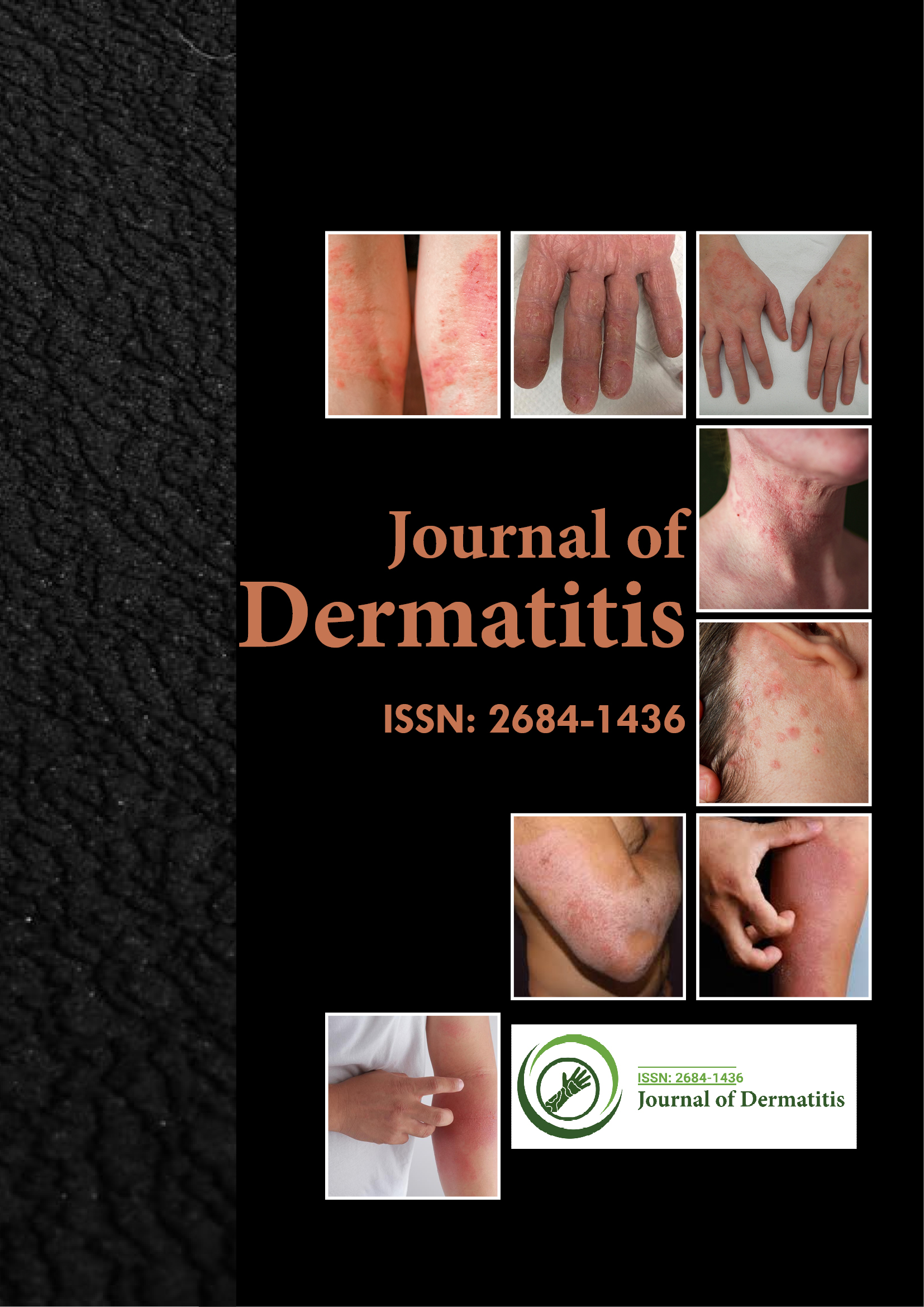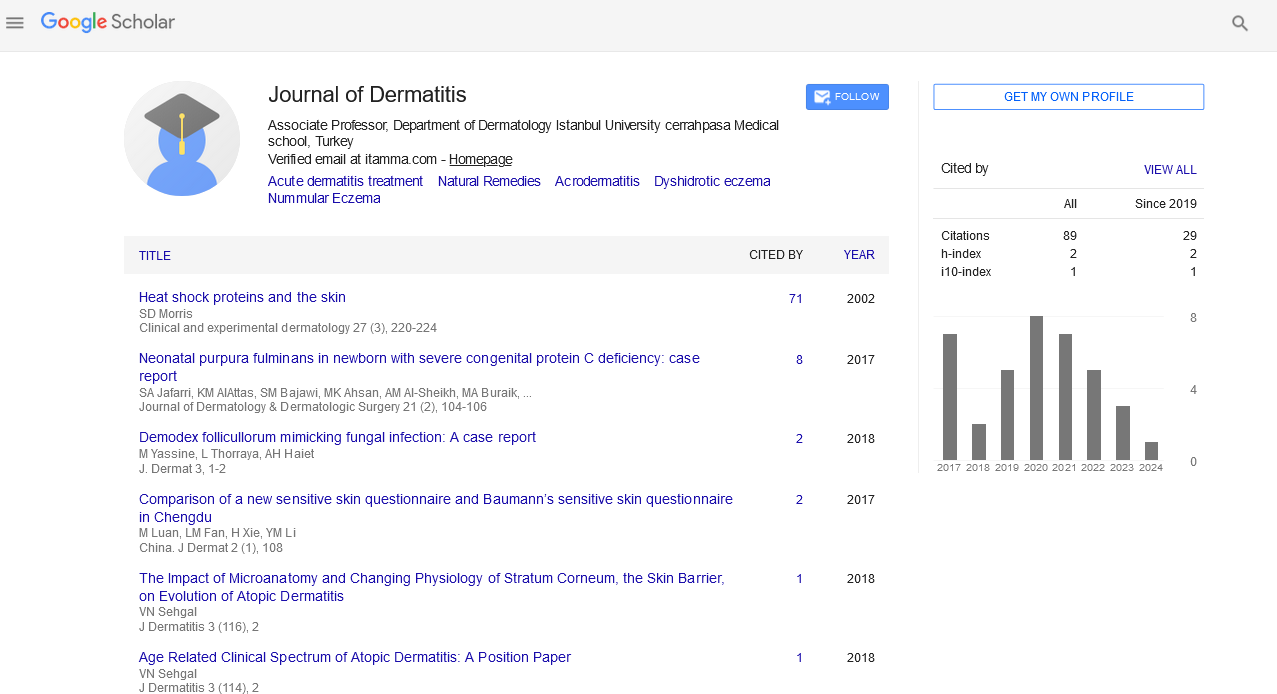Indexed In
- RefSeek
- Hamdard University
- EBSCO A-Z
- Euro Pub
- Google Scholar
Useful Links
Share This Page
Journal Flyer

Open Access Journals
- Agri and Aquaculture
- Biochemistry
- Bioinformatics & Systems Biology
- Business & Management
- Chemistry
- Clinical Sciences
- Engineering
- Food & Nutrition
- General Science
- Genetics & Molecular Biology
- Immunology & Microbiology
- Medical Sciences
- Neuroscience & Psychology
- Nursing & Health Care
- Pharmaceutical Sciences
Commentary - (2022) Volume 7, Issue 5
The Anatomy of the Face in Cosmetic Surgery
Ryota Iavazzo*Received: 01-Sep-2022, Manuscript No. JOD-22-18173; Editor assigned: 05-Sep-2022, Pre QC No. JOD-22-18173 (PQ); Reviewed: 19-Sep-2022, QC No. JOD-22-18173; Revised: 26-Sep-2022, Manuscript No. JOD-22-18173 (R); Published: 03-Oct-2022, DOI: 10.35248/2684-1436.22.7.166
Description
Skin Tension Lines (STLs) are caused by the complex interaction of internal and environmental variables that affect the skin. With time, the elastin and collagen-based intrinsic structure becomes gradually less rigid. STLs are developed as a result of its contact with the face expression muscles. Typically, STLs are parallel to the underlying facial muscles. The effects of age, especially photoaging, tend to emphasise STLs' visual characteristics.
Better scar cosmesis is achieved when the long axis of an excision is correctly positioned parallel to the STLs during STL healing. Flaps must also be positioned to allow the suture lines to fall into STLs. Even while STLs can vary from person to person, some parts of the face are more variable than others. The forehead has one main muscle that pulls it vertically, hence there is typically little individual variation; almost everyone has horizontal STLs. In contrast, there is likely to be more variation in anatomical regions where several muscles work in several directions.
The relaxed STLs' direction is typically clear in older patients. When there is uncertainty, undermining the lesion as a circle always causes the surgical defect to be pulled into an oval, with the long axis corresponding to the relaxed STL.
Cosmetic units and subunits
Junction lines are immovable features that divide the various facial cosmetic components. The best scars form when the suture lines are placed along these borders, such as the nasolabial fold and eyebrow. The best way to heal a surgically closed wound is along a junction line in a cosmetic unit. The best outcomes are obtained in larger deformities that call for a flap by using tissue from the same or nearby cosmetic unit and by stitching along the edges of those units.
Cosmetic units frequently contain modest and individually changeable subunits. Understanding the differences between the subunits requires paying close attention to details including colour, texture, sebaceous properties, and hair characteristics.
The hairline serves as a dividing line between the distinct aesthetic units of the scalp and forehead. The junction line of a bald person is the top horizontal crease of the forehead. The glabella, temples, and eyebrows are parts of the forehead.
The eyelid is a complicated structure made up of several subunits that resemble the orbicularis oculi muscle beneath. The orbital region of the eyelid, which borders the cheek inferiorly and the eyebrow superiorly, is its greatest component. The preseptal region, where the eyelashes insert, is immediately below the eyebrow, followed by the pretarsal region. The superior palpebral fold, palpebral fissure, medial limbus, and medial canthus are further parts of the eyelid.
The anterior protrusion of the contracted masseter muscle divides the cheek region. The ear forms the posterior boundary of the masseter-parotid area, which is located behind this landmark. Prior to the masseter and beneath the lower lip is the mandibular area. The zygoma anterior to the masseter muscle is where the malar subunit is located. The anterior area is the term used to describe this subunit.
The face's nose has the most facial subdivisions. The glabella is bordered on the forehead by a horizontal root that is positioned superiorly. The two lateral sidewalls surround the midnose and its medial dorsum. The tip, the small piece of tissue that divides the nostrils on the underside of the nose, finishes in the columella and borders the dorsum inferiorly. Ala nasi, or alae, encircle the tip on both sides, and soft triangles, which likewise encircle the tip and the alae, flank the columella.
The lip's component parts make up the majority of the lower face. The cutaneous regions of the upper lip are located below the nose, close to the moustache, and are separated from the cheek by the nasolabial fold. The philtrum, or central depression below the nose, is a crucial anatomical component since even slight displacement of this structure results in obvious deformity. The vermilion subunit is made up of the lips. Below the vermillion is the cutaneous lower lip, which borders the chin inferiorly and is restricted by the nasolabial fold laterally.
Facial expression muscles
Numerous characteristics set face expression muscles apart from others. All of the muscles used for face expression come from or insert into the skin rather than into bones or tendons. The seventh cranial (facial) nerve innervates them all, and they are all descended from the second embryonic branchial arch. People may make a variety of facial expressions thanks to the antagonist and synergistic muscle groups that are located in various anatomic locations of the face.
The frontalis muscles, which forms the horizontal forehead wrinkles and aids in raising the eyebrow, as well as the antagonistic corrugators and procerus muscles, which are located on the forehead, are muscles that have an effect on the forehead and eyebrow. A group of muscles known as the orbicularis oculi surround the eyes and help close them securely. Even a small incision will expose this complex, which is located on the skin's surface of the eyelid. The nasalis muscle, which has both nasal and alar components, is the nose's primary muscle. The nares are compressed and dilated as a result.
Citation: Iavazzo R (2022) The Anatomy of the Face in Cosmetic Surgery. J Dermatitis.7:166.
Copyright: © 2022 Iavazzo R. This is an open-access article distributed under the terms of the creative commons attribution license which permits unrestricted use, distribution and reproduction in any medium, provided the original author and source are credited.

